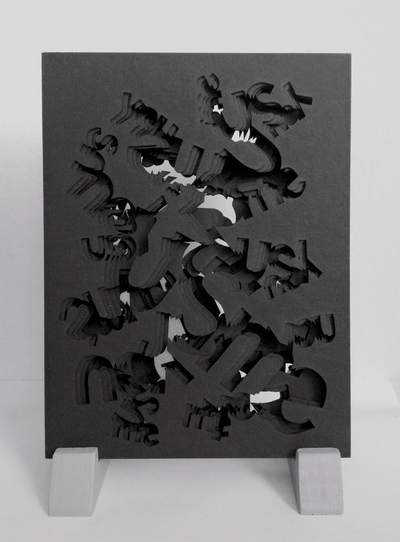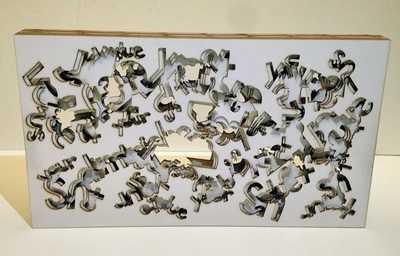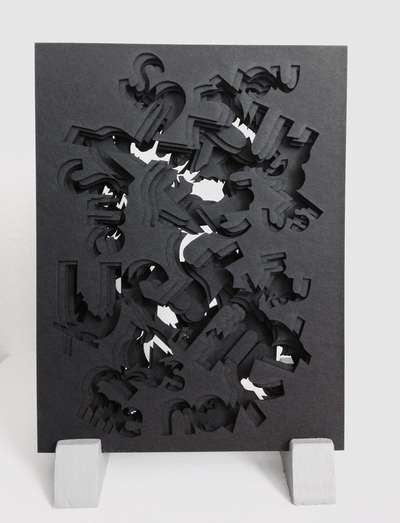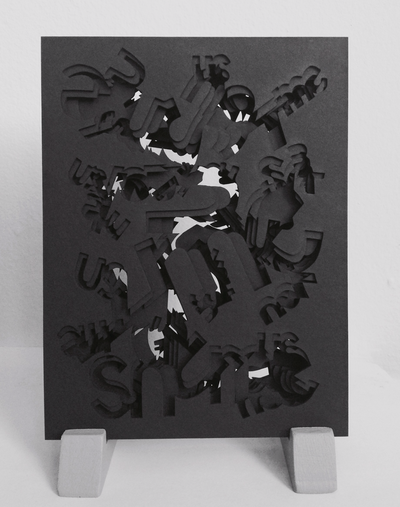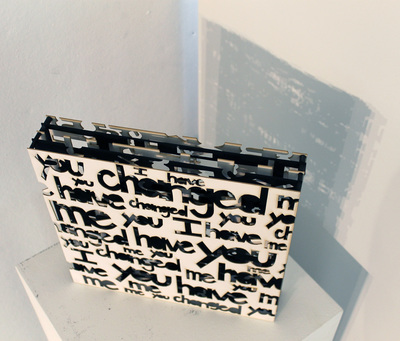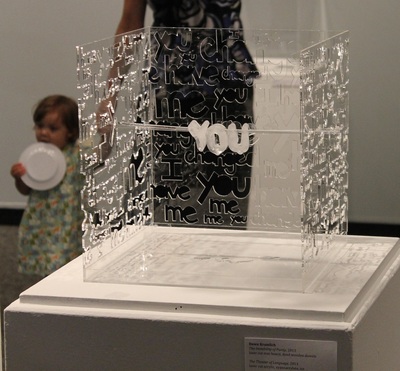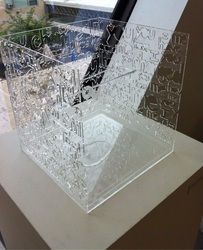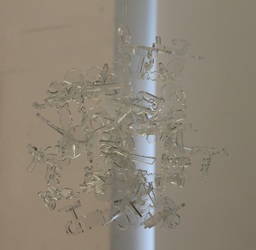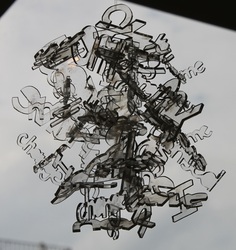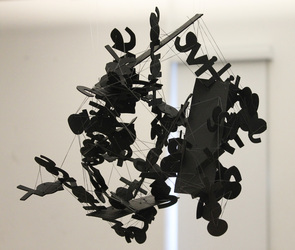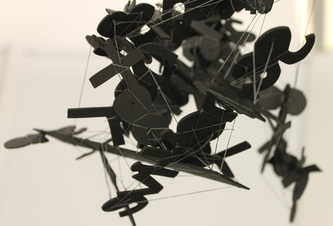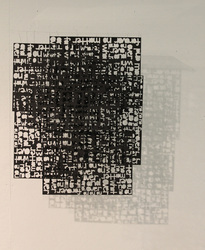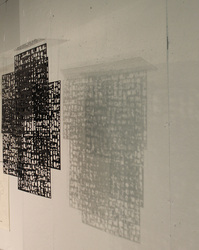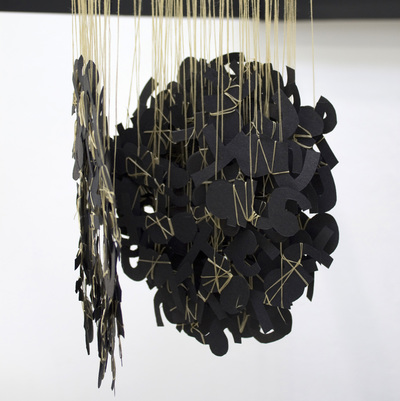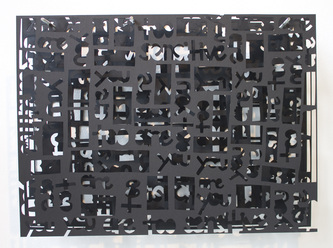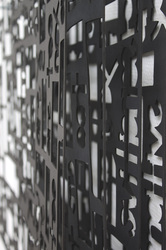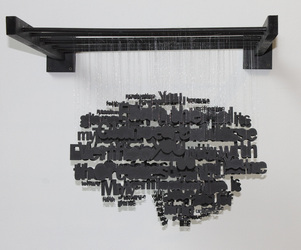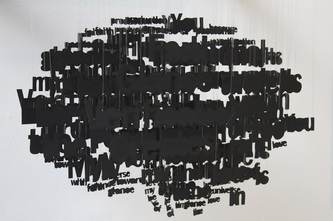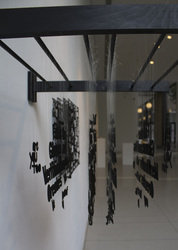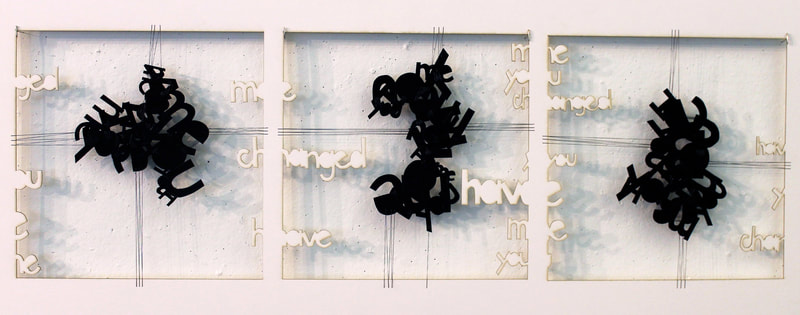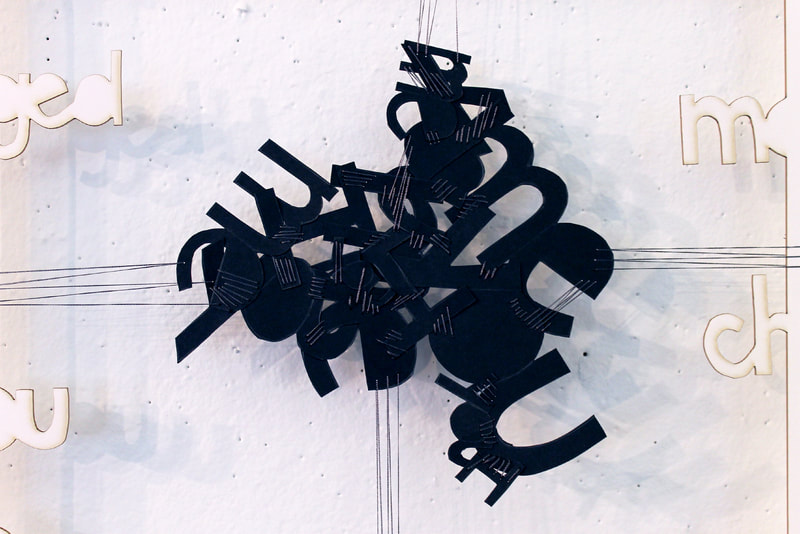bR(AM)ain (2012-2015)
"RAM, noun: random-access memory; computer memory available to the user for creating, loading, or running programs and for the temporary storage and manipulation of data, in which time of access to each item is independent of the storage sequence. As a storage medium, RAM is volatile, so its contents are lost when the power fails or is turned off." (from dictionary.com)
My impetus for the "bR(AM)ain" series (spoken as "Brain/RAM") is the notion that the communicative digital technology of our current Information Age – the Internet, cell phones, social media – changes our brains’ methods of processing information, consequently changing both our means of communicating and the ways we use verbal language within our cultural milieu. Computer-mediated communication is simultaneously both the theater and death of language; language experiences globalization because of the Internet, but there is always something lost in translation.
I find that our minds, information resources, and language itself, are turning into palimpsests – numerous strata of fragmented language, whether visual or verbal, never fully procurable due to dense histories of rapidly scanned information and cultural appropriation. As a “wordsmith,” I employ repetition, layering, and text-specificity in sculptures and installations to examine the moments when language fails to accomplish one of its base claims: clarification. Valuing quantity and instant gratification over quality and details causes this slippage of language, resulting in fragmented vagueness that caters to miscommunication and cleaved multiplicities of the self. The interstices of meaning are lost or ignored. Language is a shape-shifter; each consecutive participant’s perception molds it anew, and I deconstruct moments of communication or miscommunication by simultaneously drawing attention to such interstices and using them as a metaphor for each subjective’s multiple modes of existence.
"RAM, noun: random-access memory; computer memory available to the user for creating, loading, or running programs and for the temporary storage and manipulation of data, in which time of access to each item is independent of the storage sequence. As a storage medium, RAM is volatile, so its contents are lost when the power fails or is turned off." (from dictionary.com)
My impetus for the "bR(AM)ain" series (spoken as "Brain/RAM") is the notion that the communicative digital technology of our current Information Age – the Internet, cell phones, social media – changes our brains’ methods of processing information, consequently changing both our means of communicating and the ways we use verbal language within our cultural milieu. Computer-mediated communication is simultaneously both the theater and death of language; language experiences globalization because of the Internet, but there is always something lost in translation.
I find that our minds, information resources, and language itself, are turning into palimpsests – numerous strata of fragmented language, whether visual or verbal, never fully procurable due to dense histories of rapidly scanned information and cultural appropriation. As a “wordsmith,” I employ repetition, layering, and text-specificity in sculptures and installations to examine the moments when language fails to accomplish one of its base claims: clarification. Valuing quantity and instant gratification over quality and details causes this slippage of language, resulting in fragmented vagueness that caters to miscommunication and cleaved multiplicities of the self. The interstices of meaning are lost or ignored. Language is a shape-shifter; each consecutive participant’s perception molds it anew, and I deconstruct moments of communication or miscommunication by simultaneously drawing attention to such interstices and using them as a metaphor for each subjective’s multiple modes of existence.
